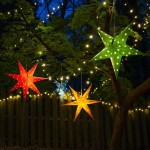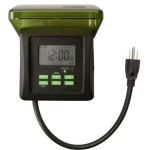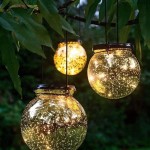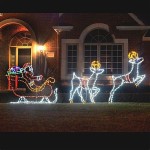Can You Make Any Outdoor Light Dusk to Dawn?
The question of whether any outdoor light can be transformed into a dusk-to-dawn light is a common one for homeowners and businesses seeking energy efficiency and enhanced security. The answer is nuanced and depends on various factors, including the existing fixture, the desired level of automation, and the available budget. The functionality of a dusk-to-dawn light relies on a photosensor, a device that detects ambient light levels and automatically switches the light on at dusk and off at dawn. While replacing an entire light fixture with a purpose-built dusk-to-dawn model is a straightforward method, other options exist to achieve similar results without complete replacement. These alternatives often involve integrating photosensor technology into the existing lighting setup.
Understanding the different approaches available is crucial for making an informed decision. This includes considering the pros and cons of each method, the compatibility of the existing fixture, and the specific requirements of the lighting application. Factors such as the type of light bulb (LED, incandescent, halogen), the wiring configuration, and the desired level of control all play a role in determining the feasibility and effectiveness of converting a standard outdoor light to a dusk-to-dawn functionality.
Implementing a Photosensor Socket Adapter
One of the simplest methods for converting an existing outdoor light to dusk-to-dawn operation involves using a photosensor socket adapter. This device screws into the existing light socket, and the light bulb then screws into the adapter. The built-in photosensor detects the ambient light levels and automatically controls the power to the light bulb. This method is particularly effective for fixtures that utilize standard Edison screw bases, such as E26 or E27 sizes. The installation process is straightforward and requires minimal electrical knowledge. Simply unscrew the existing light bulb, screw in the adapter, and then screw the light bulb into the adapter.
However, there are limitations to consider. The size of the adapter can sometimes be an issue, especially in enclosed fixtures where space is limited. The adapter must have a clear view of the surrounding ambient light in order to function effectively. If the fixture is heavily shaded or has a opaque cover, the photosensor may not accurately detect the light levels, leading to improper operation. Furthermore, the quality and reliability of photosensor socket adapters can vary significantly, so it is essential to choose a reputable brand with positive customer reviews.
When selecting a photosensor socket adapter, it is important to check its compatibility with the type of light bulb being used. Some adapters are specifically designed for LED bulbs, while others may be compatible with incandescent or halogen bulbs as well. Exceeding the maximum wattage rating of the adapter can damage the device and potentially create a fire hazard. Therefore, careful attention should be paid to the specifications provided by the manufacturer.
Installing a Hardwired Photosensor
For more complex lighting setups or situations where a socket adapter is not suitable, a hardwired photosensor offers a viable alternative. This approach involves wiring a separate photosensor unit into the electrical circuit powering the outdoor light. The photosensor is typically mounted on a wall or post in a location that provides a clear view of the natural light. When the ambient light falls below a certain threshold, the photosensor activates the electrical circuit, turning on the light. Conversely, when the ambient light increases above the threshold, the photosensor deactivates the circuit, turning off the light.
Installing a hardwired photosensor requires basic electrical knowledge and adherence to local electrical codes. It is crucial to disconnect the power to the circuit before commencing any wiring work. The photosensor typically has three wires: a hot wire, a neutral wire, and a load wire. The hot wire connects to the power source, the neutral wire connects to the neutral wire of the circuit, and the load wire connects to the light fixture. Proper wiring is essential for ensuring safe and reliable operation. If unfamiliar with electrical work, it is recommended to consult a qualified electrician.
Hardwired photosensors offer greater flexibility in terms of placement and control compared to socket adapters. The photosensor can be mounted away from the light fixture, allowing for optimal placement to capture ambient light. Some hardwired photosensors also offer adjustable sensitivity settings, allowing users to fine-tune the light activation threshold. This can be particularly useful in areas with varying levels of ambient light pollution.
One potential drawback of hardwired photosensors is the increased complexity of installation. It requires more extensive wiring and may necessitate cutting into existing electrical lines. This can be more time-consuming and potentially more expensive than using a socket adapter. However, the increased flexibility and control offered by hardwired photosensors often outweigh the added complexity for many applications.
Utilizing Smart Lighting Systems
Smart lighting systems provide the most advanced and flexible approach to automating outdoor lighting. These systems typically consist of smart light bulbs or fixtures, a central hub, and a smartphone app or web interface. The smart light bulbs or fixtures communicate with the hub wirelessly, allowing for remote control and automation. Many smart lighting systems offer built-in dusk-to-dawn functionality, which can be easily configured through the accompanying app.
Smart lighting systems offer several advantages over traditional photosensor methods. They provide precise control over the lighting schedule, allowing users to customize the on and off times based on their specific needs. Some systems also offer dimming capabilities, enabling users to adjust the brightness of the lights throughout the night. Furthermore, smart lighting systems can be integrated with other smart home devices, such as security cameras and motion sensors, to create a comprehensive smart home ecosystem.
The initial cost of a smart lighting system can be higher compared to socket adapters or hardwired photosensors. However, the added functionality and convenience offered by these systems often justify the investment for many users. Smart lighting systems can also contribute to energy savings by allowing for more efficient lighting schedules and dimming capabilities.
Setting up a smart lighting system typically involves connecting the hub to the home's Wi-Fi network and then adding the smart light bulbs or fixtures to the system using the smartphone app. The app provides a user-friendly interface for controlling the lights, setting schedules, and customizing the lighting behavior. Some systems also offer voice control capabilities, allowing users to control the lights using voice commands.
When choosing a smart lighting system, it is essential to consider the compatibility of the system with the existing light fixtures and the home's Wi-Fi network. Some systems require specific types of light bulbs or fixtures, while others may have limitations in terms of range or capacity. It is also important to choose a reputable brand with reliable customer support and a proven track record of performance.
In summary, converting an outdoor light to dusk-to-dawn operation is achievable through various methods. The choice of method depends on the existing fixture, the desired level of control, and the available budget. Socket adapters offer a simple and cost-effective solution for basic automation, while hardwired photosensors provide greater flexibility and control. Smart lighting systems offer the most advanced and feature-rich approach, enabling precise control and integration with other smart home devices. Each option presents its own set of advantages and disadvantages, requiring careful consideration before implementation.

What Is A Dusk To Dawn Sensor And How Does It Improve Your Outdoor Lighting

Dusk To Dawn Motion Sensor Outdoor Porch Lights With Gfci Waterproof Light Fixture Anti Rust Exterior Wall Mount 3 Modes For House Garage Bulb Not Included Com

Auraglow Dusk Till Dawn Sensor Up Down Outdoor Wall Light Avebury Stainless Steel Led Lighting

Dusk To Dawn Light Bulbs Outdoor

Led Outdoor Wall Light Dusk Dawn Sensor 550 Lumens 3000k

Dusk To Dawn Outdoor Lights Exterior Porch With Gfci Sensor Wall Light Fixture Mount Anti Rust Lantern Waterproof Sconce Outside For House Garage Front Door Com

Westinghouse One Light Led Outdoor Wall Fixture With Dusk To Dawn Sensor Oil Rubbed Broe Finish

Led Outdoor Wall Light Dusk Dawn Sensor White Water Glass

Lnc Modern 1 Light Black Dusk To Dawn Outdoor Wall With Motion Sensor Exterior Sconce Clear Glass Shade Lmrzuma278as8c The Home Depot

Filiyano Motion Sensor Outdoor Wall Light Black Dusk To Dawn Lighting Led Waterproof Exterior Fixture Modern Porch Outside Mount Fo In 2024 Lights
Related Posts







